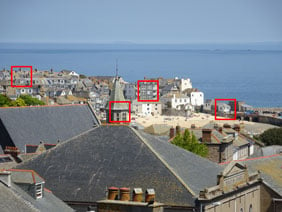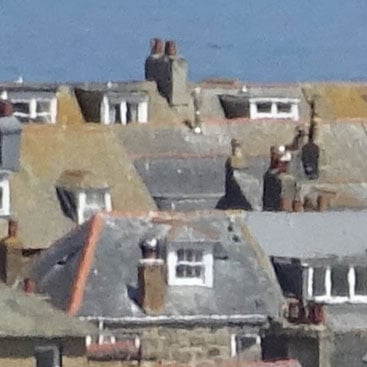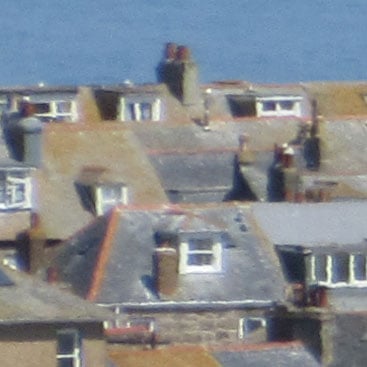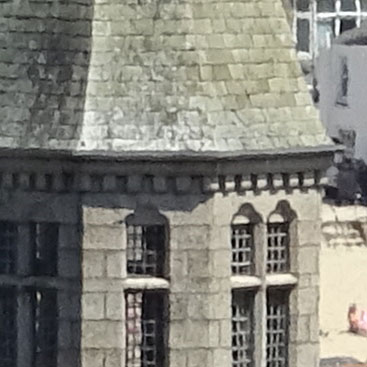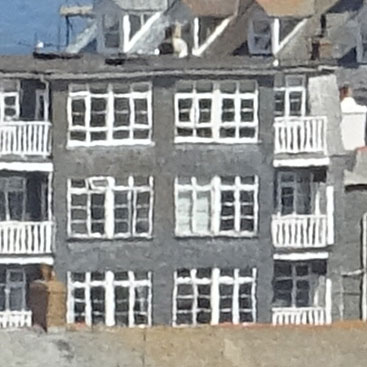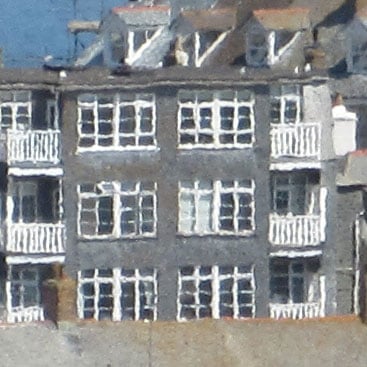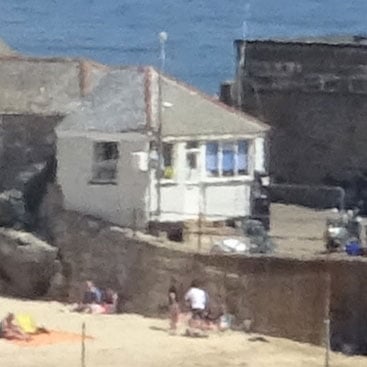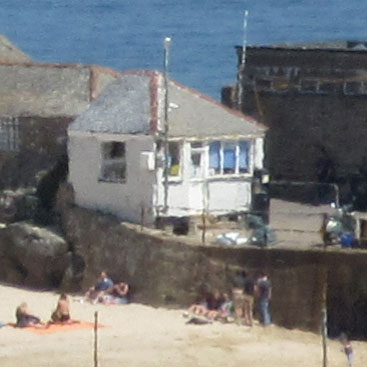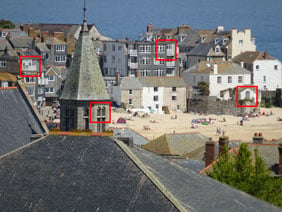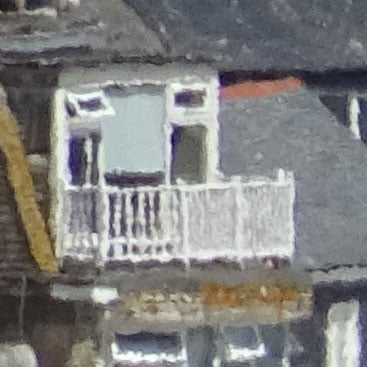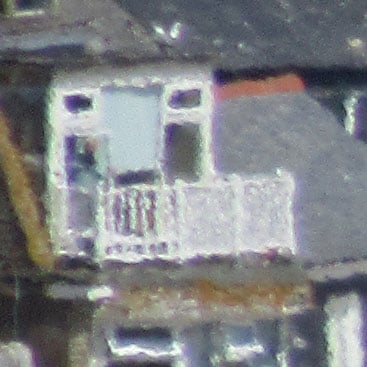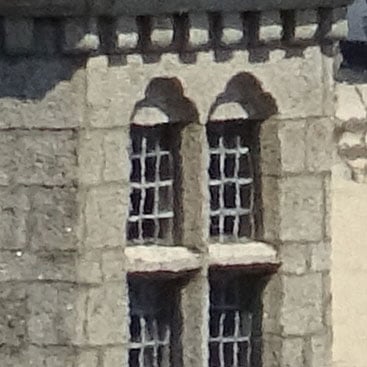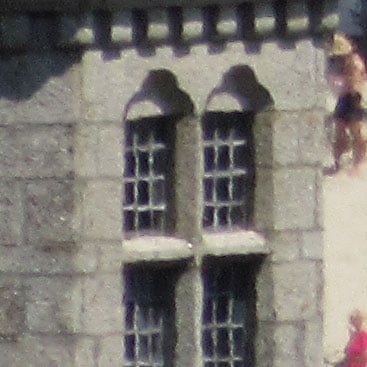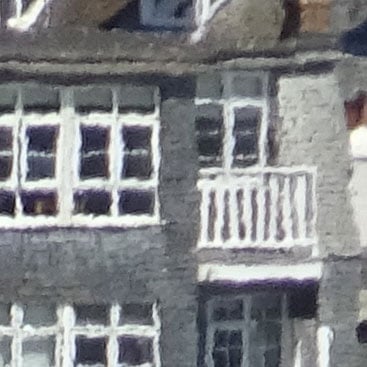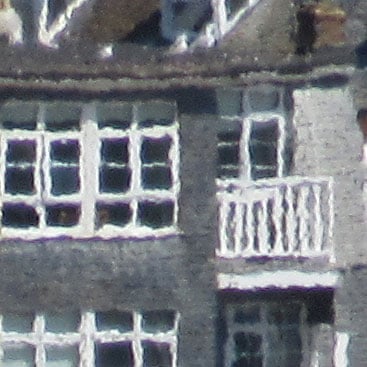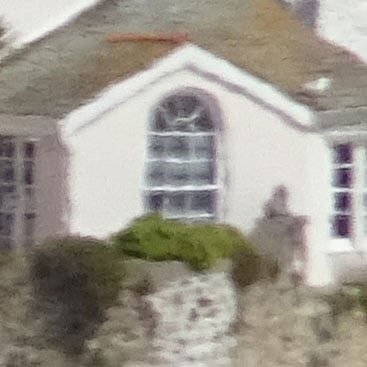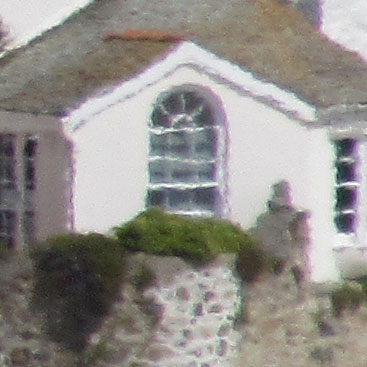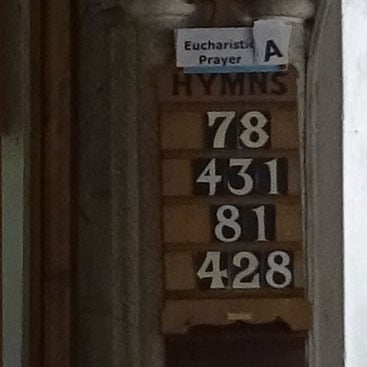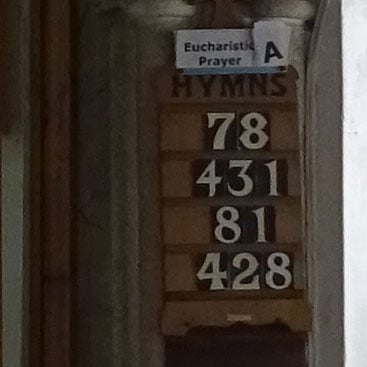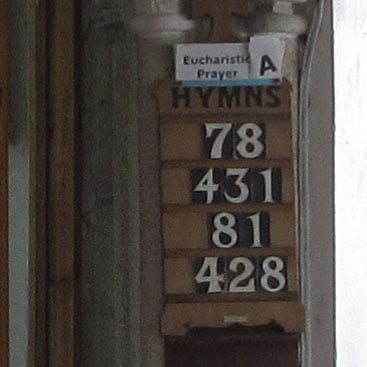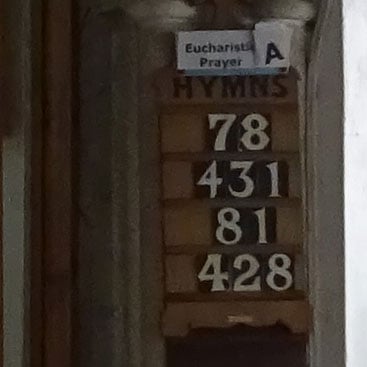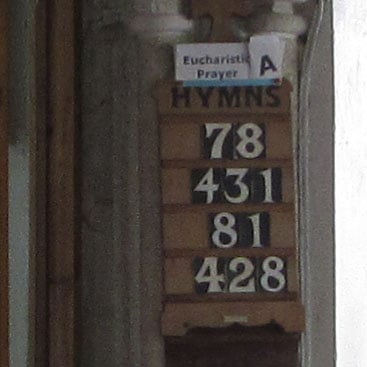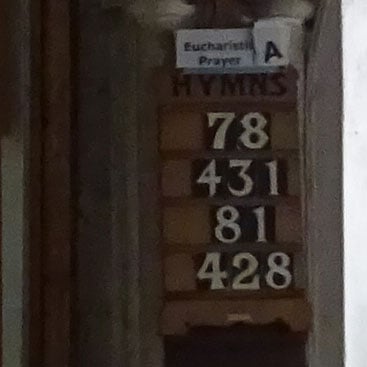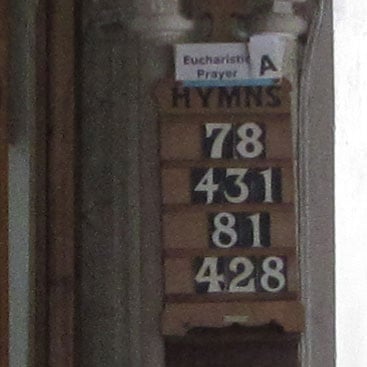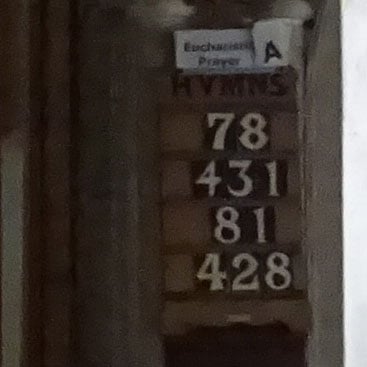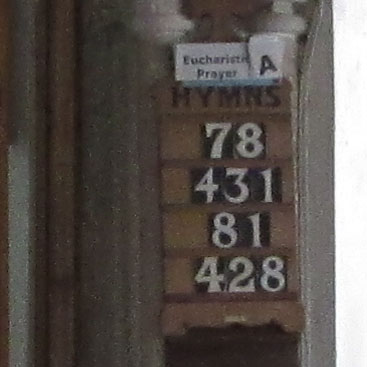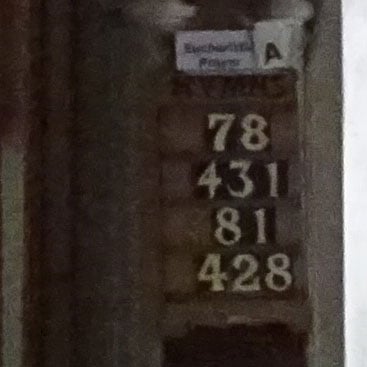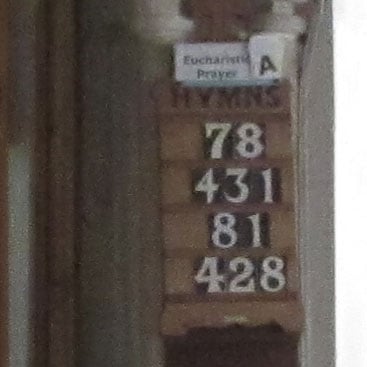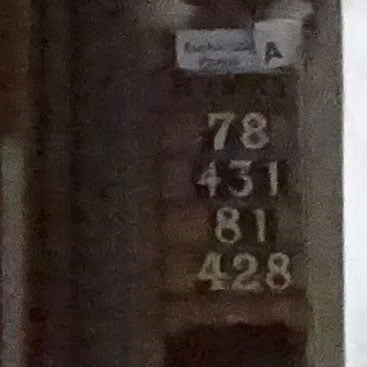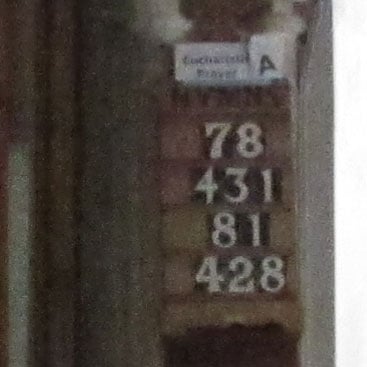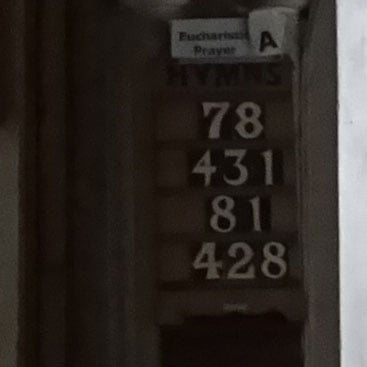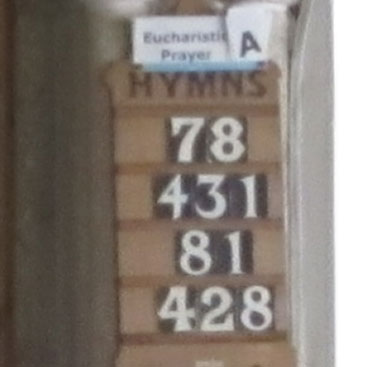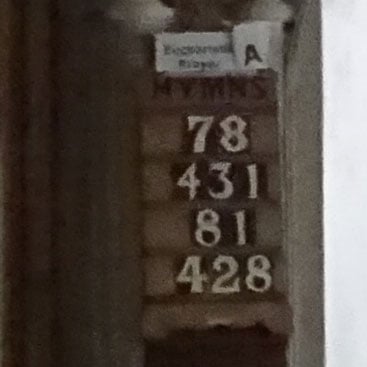Sony Cyber-shot WX350 review
-
-
Written by Ken McMahon
Quality
To compare real-life performance I shot this scene with the Sony Cyber-shot WX350 and the Canon PowerShot SX600 HS within a few moments of each other using their best quality JPEG settings.
Both cameras were set to their maximum wide angle 25mm equivalent focal length. Neither of these compacts has manual exposure so both were set to Program Auto mode with the ISO sensitivity set manually to the lowest available setting.
For this test the cameras were mounted on a tripod. Image stabilisation can’t be disabled on the WX350, so was left on the default intelligent Active setting, but was disabled on the Powershot SX600 HS.
The image above was taken with the Sony WX350. The camera was set to Program Auto mode and at at its base 80 ISO sensitivity setting chose an exposure of 1/1000 at f3.5 At its 100 ISO base sensitivity setting the PowerShot SX600 HS selected 1/1000 at f3.8. As usual the crops are taken from the areas marked in red above.
The first thing that strikes you looking over the crops below is the quality difference between the edge and the centre of the frame on the Sony WX350. The first crop from close to the left edge of the frame is showing a little bit of distortion with the vertical angles of the window frames at a slight slant. The edges aren’t as crisp as you might expect and there’s not a lot of detail in the greenery in the bottom half of the frame.
Thankfully, things improve hugely in the second crop from closer to the middle of the frame. Here the edges are a lot sharper and there’s a good level of detail in the church tower, though you can’t quite make out the time on the clock. In the third crop the lighthouse is a distinct white rectangle and you can just about make out the lamp room on top. The detail in the foreground at the bottom of this crop is also nice and sharp.
Then, on the final crop from close to the right edge of the frame it’s a return to the distortion and fuzziness, only this time it’s a little worse than it was on the left edge. Overall then, a good performance by the Sony WX350’s 18.2 Megapixel sensor, slightly let down by the lens quality with the aperture wide open at the edge of the frame.
By comparison the crops from the PowerShot SX600 HS all look a little bit cleaner and sharper to me. Just to note that the 16 Megapixel sensor in the PowerShot SX600 HS produces crops with a larger area and slightly smaller detail than the 18.2 Megapixel sensor in the Sony WX350.
The window frames in the first crop from the PowerShot SX600 HS have crisper edges and there’s more detail in the trees. Though you still can’t tell the time on the church clock there’s a little more detail in the PowerShot SX600 crop – compare the upper windows covered by the blue grille. I can’t spot much of a difference in the lighthouse crops, but the fourth crop from the PowerShot SX600 HS is a clear winner.
Scroll down the page to see how these models compare when zoomed in to 180mm and 450mm equivalent focal lengths. Alternatively, to see how they compare at higher sensitivities check out my Sony WX350 noise results.
Sony WX350 JPEG | PowerShot SX600 HS JPEG | |
 | 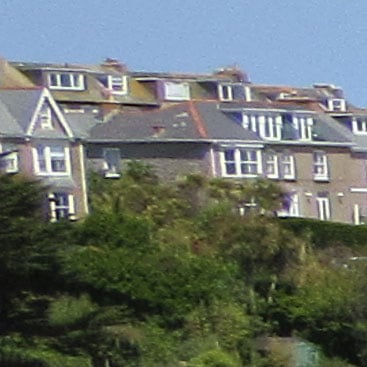 | |
f3.5, 80 ISO | f3.8, 100 ISO | |
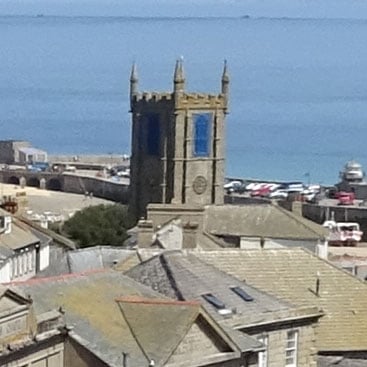 | 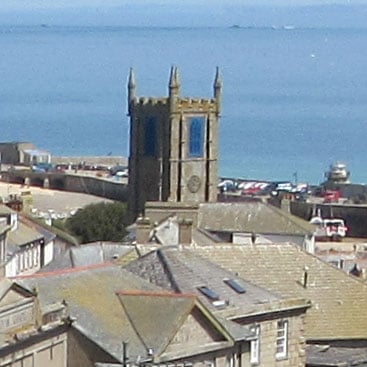 | |
f3.5, 80 ISO | f3.8, 100 ISO | |
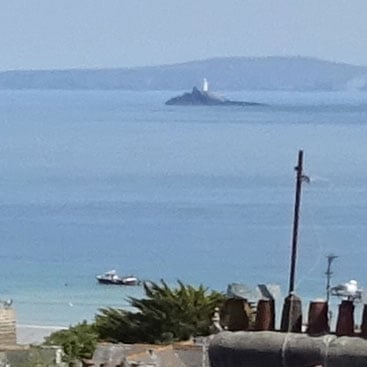 | 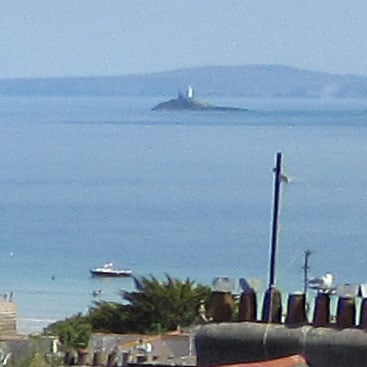 | |
f3.5, 80 ISO | f3.8, 100 ISO | |
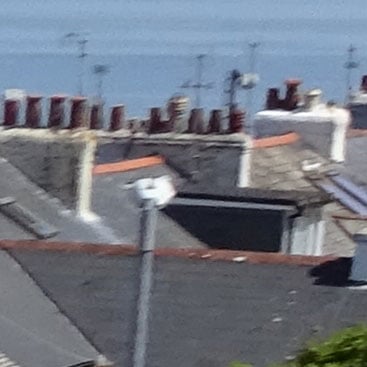 | 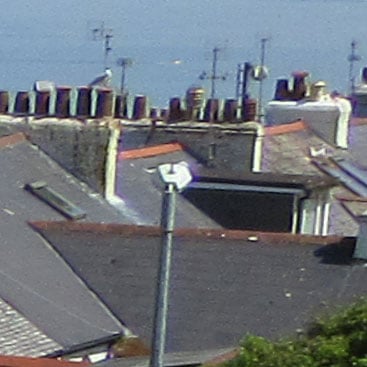 | |
f3.5, 80 ISO | f3.8, 100 ISO |
Sony Cyber-shot WX350 vs Canon PowerShot SX600 HS Quality at approx 180mm
For this next test I zoomed both cameras in to an equivalent focal length of around 180mm. At this setting the widest available aperture on both cameras is f5.6. As usual, the crops are taken from the areas marked by the red rectangles opposite. At 180mm equivalent the Sony WX350 is looking much better at the edges with none of the distortion and blurring of the wide angle crops. The general level of detail is lower though and, as before, there’s an improvement as you move to the middle of the frame, but not to the same degree as in the wide angle crops. As before, the 16 Megapixel sensor in the PowerShot SX600 HS produces a larger crop area with smaller detail than the 18.2 Megapixel sensor in the Sony WX350. This time the tables are turned, though, with the first crop from the WX350 looking a lot cleaner than its counterpart from the PowerShot SX600 HS. The next two crops from the middle of the frame are also a win for the WX350 with cleaner edges and marginally better detail. Once again though the WX350 doesn’t do well on the extreme right edge of the frame and the PowerShot SX600 HS is a little better here. Scroll down for a comparison at a longer focal length, or check out my Sony WX350 noise results.
Sony Cyber-shot WX350 vs Canon PowerShot SX600 HS Quality at approx 450mm
For this final test I zoomed the PowerShot SX600 HS to its maximum 450mm and zoomed the Sony WX350 in to match the framing. This is just a little short of the WX350’s maximum focal length of 500mm equivalent – to see how much of a difference that makes in terms of framing take a look at the lens and stabilisation section on the previous page. In Program Auto mode both models selected the maximum aperture available at this zoom magnification – f6.3 on the WX350 and f6.9 on the PowerShot SX600. As usual, the crops are taken from the areas marked by the red rectangles. A little short of the Sony WX350’s maximum 500mm telephoto focal length the detail in the first crop from the WX350 is looking decidedly clumpy. This crop is from the same part of the scene as the third crop in the sequence above but the vertical balcony rails are clearly defined in that crop – here they’re difficult to tell apart. Once again though, things improve significantly in the crops from the middle of the frame, particularly in the second crop though, even here, edges are a little wobbly. Finally the WX350 produces a consistently poor result from the extreme right edge of the frame. The crops from the PowerShot SX600 HS at its maximum 450mm zoom range are a little below the standard of the WX350. The first crop looks coarser, the second softer. Its only the last one, where the WX350 performed consistently poorly that the SX600 HS wins out. Overall I think it’s fair to say that, by a small margin, the PowerShot SX600 produces better results at the 25mm wide angle setting, but the Sony WX350 has the edge at longer focal lengths. Next check out my Sony WX350 noise results!
|
Sony WX350 vs PowerShot SX600 HS noise JPEG
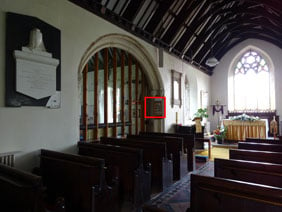
To compare noise levels under real-life conditions, I shot this scene with the Sony Cyber-shot WX350 and the Canon PowerShot SX600 HS within a few moments of each other using their best quality JPEG settings at each of their ISO sensitivity settings.
Both cameras were set to their maximum wide angle 25mm equivalent focal length. Neither of these compacts has manual exposure so both were set to Program Auto mode with the ISO sensitivity set manually.
For this test the cameras were mounted on a tripod. Image stabilisation can’t be disabled on the WX350, so was left on the default intelligent Active setting, but was disabled on the Powershot SX600 HS.
The image above was taken with the Sony Cyber-shot WX350. The WX350 was set to Program Auto exposure mode and with the ISO set to 80 chose an exposure of 1/2s at f3.3. At its base 100 ISO sensitivity setting the PowerShot SX600 HS chose an exposure of 0.6s at f3.8. As usual, the crops are taken from the area marked in red above.
The first 80 ISO crop from the Sony WX350 looks impressively clean and detailed. It’s not completely noise-free and you can see slight texturing across the crop area but it’s most noticeable in the shadow to the left of the hymn board and in the white label at the top. The 100 ISO crop is a tiny bit noisier, so 80 ISO is the one to use for best quality in good light.
At 200 and 400 ISO there are small but significant increases in the noise levels. If you’re making big prints you’d notice, but at reduced magnification on screen you’d have a job telling the difference. And while at 800 ISO things get decidedly clumpier, there’s still a good level of detail and the edges are holding up well.
At 1600 ISO there’s another big jump in the noise levels and this time the detail takes a hit and the edges begin to crumble. At 3200 ISO the text on the label is becoming illegible, but larger detail is holding up and this ISO setting produces results that are fairly passable at smaller sizes. Overall I’d say this is an excellent result for a compact sensor with useable results all the way to the top 3200 ISO setting.
Compared with the PowerShot SX600 HS, there’s really not a great deal in it as far a noise performance goes. Again, just to remind you that the 16 Megapixel sensor in the PowerShot SX600 HS produces crops with a larger area and slightly smaller detail than the 18.2 Megapixel sensor in the Sony WX350. The SX600 HS lacks WX350’s 80 ISO setting, but its 100 ISO crop compares very favourably with both the 80 and 100 ISO crops from the WX350. In fact cast an eye down the table below and at each of the ISO settings up to the maximum 3200 ISO, it’s hard to discern a difference in noise levels in the respective crops from either model.
The WX350 has a raft of composite modes that produce lower noise results at high ISO settings. The most useful of these is Multi Frame Noise Reduction which allows you to set the ISO manually from 100 to 12800. I’ve included a crop from the WX350 in MFNR mode at 3200 ISO in the table below.
There’s also the WX350’s Handheld Twilight mode which sets the ISO automatically. The equivalent on the PowerShot SX600 HS is Handheld NightScene which also sets the sensitivity automatically. For this test Hand-held Twilight on the WX350 chose 800 ISO while Handheld NightScen on the SX600 HS chose 1600 ISO. So while you can’t make a direct comparison from the table below, you can at least compare them with the single-shot version at the same ISO setting.
Now head over to my Sony WX350 sample images to see some more real-life shots in a variety of conditions, or head straight for my verdict.
| |||||||||||||||||||||||||||||||||||||||||||||||||||||||||||||||||||||||||||||||||
